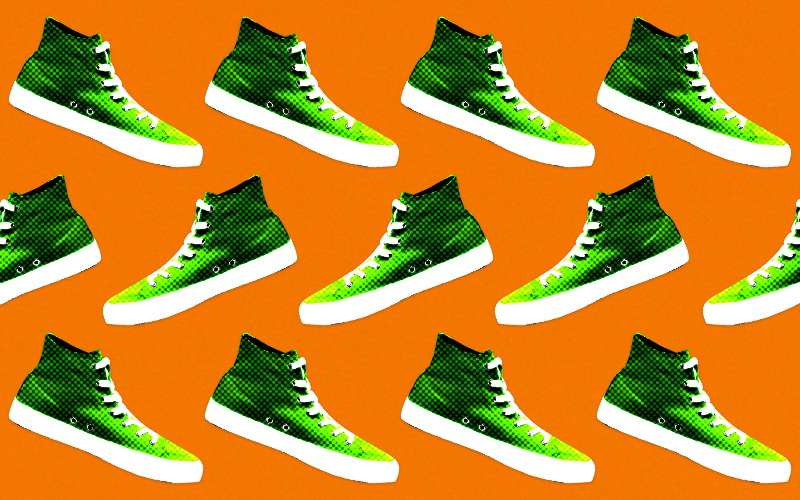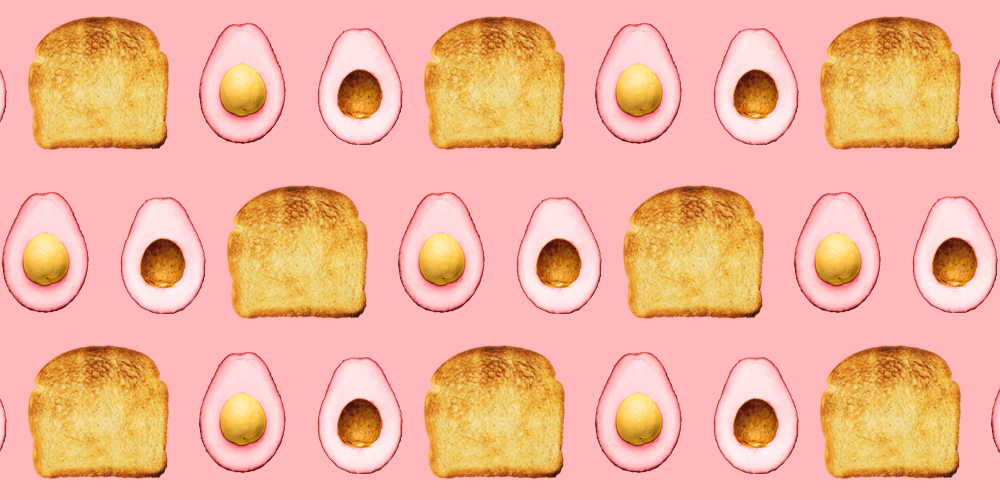On January 20th, 2017, I went to see a music show at a small queer-centric community space in East Hollywood. It was the night of Donald Trump’s inauguration, and the day before the first Women’s March. The mood was somber. An artist called Cuddle Formation was playing, and they sat in the middle of the room surrounded by keyboards and pedal boards, candles, incense, and dried flowers. The walls of the room were painted a light Pepto Bismol pink, and a pink neon sign in the corner bathed the room in soft light. There weren’t many people there — maybe ten or fifteen — and we all sat on the floor, speaking quietly, holding hands, comforting each other.
It’s hard to remember, today, the state of mind that made that scene possible. Hope was a thing so recently squandered. The aesthetics of the moment now look quaintly — almost laughably — naive. All soft pinks and lavenders. Lowercase letters in unsteady cursive. Reminders to drink water and “meditate” spray painted on the sidewalk in sweet stencil lettering. Glitter hearts stuck to well-hydrated skin. “Radical Softness” and “Love As Resistance” emblazoned on t-shirts, and the word tender everywhere, whispering itself into existence, modifying the things and places we needed to feel less exhausting.
I was thinking about that night as I came out of the long-awaited Barbie movie, which felt to me like the final stop on a pastel-hued train that had been traveling to us since about 2014. I liked the Barbie movie. I thought it was a good movie about feminism for kids, which is in no way an insult. The film represented a victory lap for the ideas and, maybe just as importantly, the aesthetic that came to define progressive millennial coming-of-age, and the wave of feminism that came with it. It is a feminism that feels good and also looks good. It’s unapologetically stylish (though with more self-awareness than the lipstick feminism of the nineties and early aughts), and it’s subversive (though perhaps less radical than some of our second-wave predecessors might have hoped). It measures success by political metrics like the number of senate or boardroom seats occupied by women, but it also is concerned with liberation at the most personal level. It is a feminism that takes a particular interest in speaking to young girls, and delights in reclaiming the trappings of girlhood (like Barbie) which traditionally have been weaponized as frivolous or unsubstantial. And like Barbie, this feminism is famously very pink.
Some things I collected from that year of the quiet show on the night of Donald Trump’s inauguration: a pen and ink drawing of a Mead composition notebook with a light pink carnation tucked in its pages, a photograph of a woman in a pink bra and underwear with pastel flowers painted over her body like draping vines, a bubblegum-colored cassette tape in a hand-sewn velvet pouch, the obligatory pink pussy hat, an oversized black t-shirt with the words “I’m depressed” in shimmery fuschia adhesive lettering, a keychain of a pair of coral colored underwear with blood dripping from the crotch, a large number of sage bundles wrapped in rose petals and hand dyed pink string, a home-printed zine of essays with a line drawing of a pink-nailed hand pouring the contents of a prescription bottle into a waiting palm.
I’m not sure that this aesthetic went out of style so much as it became untenable. In ways that we should have perhaps foreseen, it was never going to be possible to get through this decade on tenderness alone. During the pandemic, the community space that hosted the show vacated their building, forced out by the pandemic economy and a callous landlord. They eventually found a new place and painted the walls mustard yellow and red. For some reason, it was the change of colors, even more than the change of location, which confirmed to me that a very particular era had ended. Pink is still around, of course, on runways and red carpets, but its salmon-hued tyranny has effectively ended. Meanwhile, the pastels that we wrapped ourselves in have become the butt of every Millennial Pink joke.
In fact, the most pink I’ve seen in quite some time was in the Barbie movie. In the theater, immersed in that bright bubblegum world, I was surprised to realize that I’d regrown some of my old discomfort with the color at some point during the last several years. I no longer have much of it on my walls or in my wardrobe, and when I encounter it in the world I experience a vaguely nostalgic sense of embarrassment, the kind you might feel when discovering an old photo of yourself with a haircut you once thought was cool. And maybe it’s a coincidence, but I also don’t find myself championing the virtues of tenderness as I once did. They too seem like vestiges of an improbable, faintly unfashionable version of myself.
I’m told that the new millennial pink is Gen-Z yellow, which, despite being an obvious ploy by marketers hoping to make the same profits by swapping out the lucrative Pantone swatch of one group of young people for a sunny new one, does upon casual observation seem to hold some water: you do see an awful lot of yellow out there these days.
It’s in Beyonce’s Oscars performance, and the posters for the 100 gecs show that I keep walking past on my way to the park. It’s in the tinted shades of the Matrix-thin sunglasses that a teenager skateboarding past my window is wearing. It’s the banana monochrome world that a dead-eyed Billie Eilish smashes through in her video for “Bad Guy.” Yellow can be a warm, cheerful color, a symbol of sun and smiles. But in this moment it feels more like the color of warning, of alarm. If softness defined the aesthetics of the last half decade or so, aggression has come to fill the vacuum it left when it fled.
This new generation is represented in the Barbie movie by Ariana Greenblatt’s character, Sasha, whose story arc we track, rather tellingly, by how much pink she is wearing as the movie goes on. And while it makes for a nice ending — three generations of feminism united under the same bubblegum banner — this was also the part that I found to be the most incongruously sentimental. The teens I see walking down my street seem to me to want to project a distinctly un-pink scrappiness that we millennials lacked. 2023 is not 2016, after all, and there is a sense, in their dirty running shoes and cargo pants, that these kids will not be repeating our mistakes. That they are way beyond caring. That the ugliness is the point. In the lime greens and malevolent oranges, they are incapable of being shocked by anything, anymore. That they are post-irony, post-trend, post-effort, post-aesthetic. And although anti-aestheticism is, I think, technically an aesthetic, I’m inclined to give it to them.

There will inevitably be — doubtlessly already is — a machine working hard to turn this genuine outward expression of personal and generational ideals, frustrations, aspirations, resentments, and beliefs into something profitable. Companies are designing pre-dirtied dad sneakers to be sold for hundreds of dollars and websites publishing lists on Gen-Z that categorize their clothing in neat little subgroups (usually with the suffix “-core” at the end, for some reason), into which we can all reverse engineer ourselves according to our own personal cocktail of optimism, despair, ennui, and level of comfort with low-rise jeans. Perhaps in 10 years, these kids will get their own spiritual descendant of the Barbie movie. But before that reality fully spins up, where aesthetic is merely fashion, there is this brief moment where a group gets to define themselves. In color and shape and texture, they get to tell us how they feel about the world in a real and unmediated way that is far more interesting than it is often given credit for.
I recognize that few things ring more tiresome than a member of an older generation commentating on the tastes of the incoming class of youth, evaluating from afar as if she fancies herself an authority of some kind (I do not, I assure you). I do not imagine that I understand the breadth and complexity of today’s youth culture any more completely than I did my own. Surely there are high school students today as invested in the trappings of softness as we were; I see them sometimes, in fact, walking around Brooklyn with their hand-crocheted sweaters and peasant sleeve blouses (cottage-core, I believe it’s called?). For that matter, it was not difficult, when I was in my early twenties, to look around and find other young people who declined to participate in the soft pastels that were said to define us.
That said, enough dust has settled on the 2010s for there to have emerged some universal understanding as to what colors, patterns, and words we can use now and into the future to evoke, in fondness and in scorn, those years of millennial coming-of-age. Of late Obama and early Trump, of the rise of the Black Lives Matter and Occupy movements, and the first Women’s March. Of avocado toast jokes and, underneath them, the first twinkling realization that our lives might not look like the ones our parents had promised. The colors are pink and rose gold (enshrined forever in the millennial zeitgeist by Apple’s rabidly popular 2015 release of the rose gold iPhone, now discontinued), with shadows of restful palms draping through the frame – something pale green and alive, something to take care of. Aesthetics, frivolous as they are, do mean something. At their core, they point towards a mode of self-definition, a kind of aspirational shorthand for how we want to be perceived, and how we wish to indicate ourselves to others. How approachable do we want to appear, and by whom? How vulnerable do we volunteer to make ourselves? In what sorts of environments do we wish to seem at home?
The Barbie movie understands this, and it is no accident that the avatar that has emerged for millennial feminism is a woman whose style is co-equal to her substance. When I think about the night of Donald Trump’s inauguration, and when I think about the Barbie movie, and everything that happened in between, I think about millennial pink. Pink was a color I had always been taught to associate with unseriousness, with a shameful kind of femininity, but I watched it become the color of solidarity, of service, of reclamation, the color of strength in softness, and of softness in strength. Millennial pink was always going to have to have to retire at some point, and personally, I can hardly think of a better send-off than the Barbie movie. But still, I’m grateful for it. I think it contributed something meaningful, absurd as that sounds, that’s worth remembering.•
Source images courtesy of rawpixel.com and freepik via Freepik.com.




